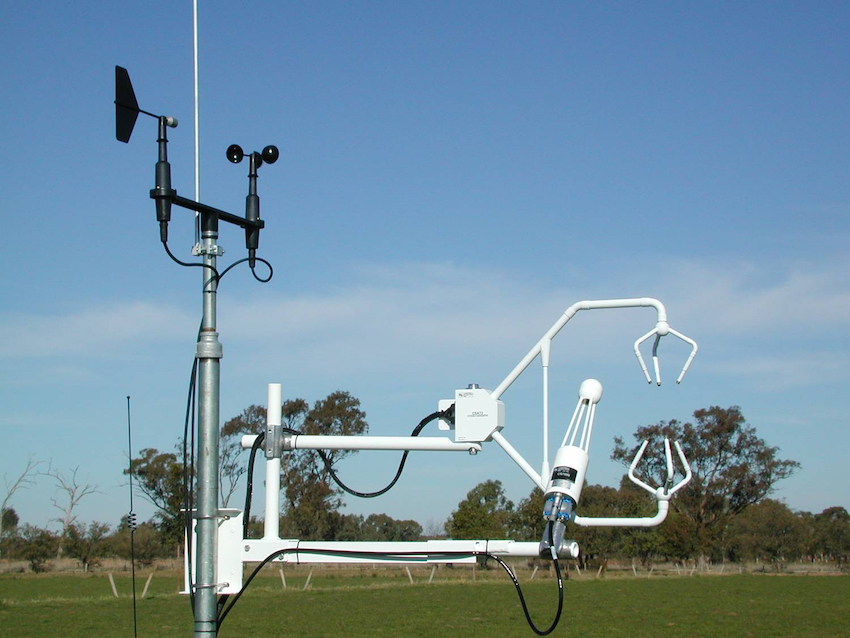The Paris Climate Agreement (COP 21) enshrined the goal of balancing the emission and removal of greenhouse gases from the atmosphere in order to achieve net zero overall emissions by 2050.
One way to remove emissions is to sequester carbon in trees or in soil through the expedience of soil carbon farming. The sequestered carbon is then locked up for 25 or even 100 years and used as offsets to other parts of the economy that cannot yet achieve absolute emission reductions. Since these offsets can be traded, they potentially pose a new revenue stream for growers.
Professor Richard Eckard from the University of Melbourne has analysed implications for the grains industry from the adoption of soil carbon farming, with the results presented at the GRDC Southern Grains Research Update in February.
The analysis was undertaken in collaboration with Professor Peter Grace from the Queensland University of Technology and Dr Warwick Badgery from the Department of Primary Industries, NSW, with investment from GRDC.
Overall, the analysis found that soil carbon farming is generally ill-suited to the Australian grains industry and the researchers sounded a note of caution regarding its widespread adoption.
Offsets are needed on-farm
“There are aspects to grain production that can’t get to net zero, meaning that the grains industry itself will need those offsets,” Professor Eckard said. “Without those on-farm offsets – what we have started calling ‘insets’ – the emission level associated with grain goes up at a time when markets are seeking to penalise high-emissions grain.”

Carbon dioxide analysers are helping the grains industry understand its emission intensity and how to navigate a net zero emission world. Photo: The University of Melbourne
Professor Eckard stressed that industry needs to be aware of these COP-related trends regarding grain markets. In particular, he highlighted proposals to introduce carbon border adjustment tariffs against countries deemed to have “insufficient ambition” in terms of climate change taxes and policy. Included is the European Union’s Carbon Border Adjustment Mechanism that is scheduled to activate by 2023.
“With Australia ranking extremely low on the recent Climate Change Performance Index (CCPI), it is likely our agricultural sector will need to demonstrate low carbon production to avoid border adjustment tariffs on our exports,” Professor Eckard said.
In addition, he said, it is not enough to note government targets. Most multinational agricultural supply chain companies have set targets consistent with the Paris Agreement, as have the banks that hold more than 50 per cent of the agricultural debt market in Australia.
“Once traded, you no longer own the soil carbon – someone else owns it – and that’s a trap for industry given the broader economic drivers,” he said. “Sequestered soil carbon is more valuable on-farm as insets than traded as offsets.”
Productivity value of healthy soils
Professor Eckard also spoke about a tension between the soil material that best serves as sequestered carbon – exemplified by charcoal and broken-down residue – and the productivity gains achieved by building up soil health.
To have confidence to sell soil carbon, he said, a significant amount of carbon must be in a recalcitrant (slowly decomposing) form so that it is still there in 25 years. The tradable portion makes up about half (58 per cent) of soil organic matter. Plant residues on the soil surface, roots and buried plant residues – the material that helps improve the soil’s value to growers – does not count as sequestered carbon.
“We found that the productivity value of building soil organic matter – such as its water-holding ability and the release of nutrients – is actually greater than its value as carbon credit,” Professor Eckard said. The benefits are highlighted in Figure 1.
Table 1. The inherent biological, physical and chemical co-benefits that high soil organic matter may confer to an agricultural production system.
| BIOLOGICAL ROLES | PHYSICAL ROLES | CHEMICAL ROLES |
|---|---|---|
| Reservoir of nutrients Biochemical energy Increased resilience Biodiversity | Water retentions Structural stability Thermal properties Erosion | Cation exchange pH buffering Complex cations |
Source: Jeff Baldock
The starting point of the soil also needs to be considered. For example, conservation farming builds up soil carbon, making additional sequestration difficult, unless a switch to permanent pastures is being contemplated.
Indeed, growers must demonstrate they are undertaking activities in addition to their normal practice to sequester carbon if they are to engage in soil carbon offset markets. For example, a grower who changes to zero-till practices will be rewarded if they have registered the field (defined as a Carbon Estimation Area) and can show a measurable change in soil organic carbon in the top 30 centimetres or deeper.
“A farmer who has employed zero-till for many years is unlikely to be rewarded,” Professor Eckard said.
Furthermore, levels of soil carbon are known to fluctuate greatly under no-till cropping, with the prime driver being rainfall. That creates uncertainty in determining precisely how much carbon is actually being stored, which is further exacerbated by the poor resolution of existing soil carbon measuring methods.
Importantly, he highlighted that placing a price on soil carbon has skewed the discussion away from what really matters – namely soil health and productivity.
“There is a lot of media and marketing hype around soil credits but we think proponents are selling products that are not always based on sound agronomic advice,” Professor Eckard said. “We need to stick to the basics. Soil organic matter is the engine room of soils. The real benefit lies in building healthy soil.”
More information: Richard Eckard, richard.eckard@unimelb.edu.au.
Read more: Richard Eckard’s paper presented at the Southern Research Update - Building soil carbon for your business.

























































